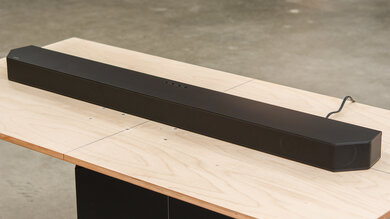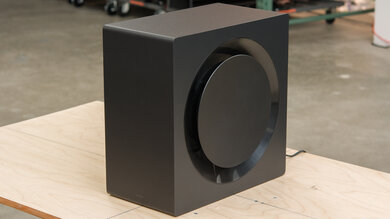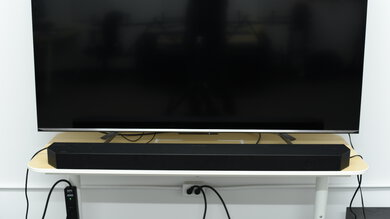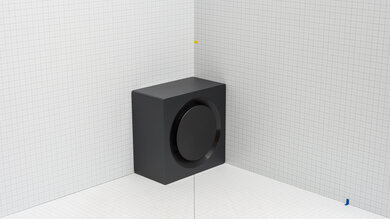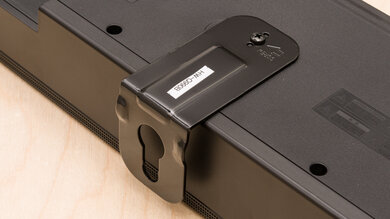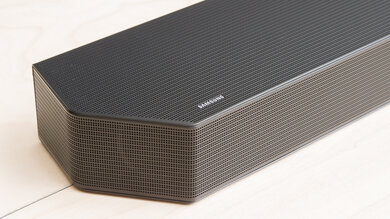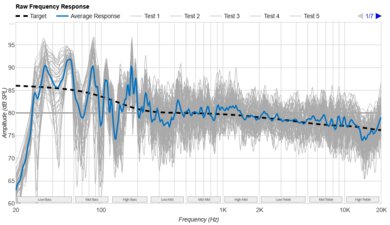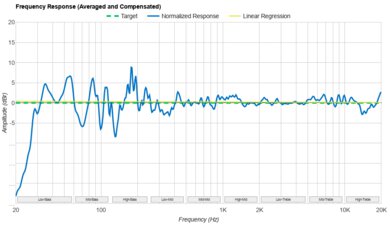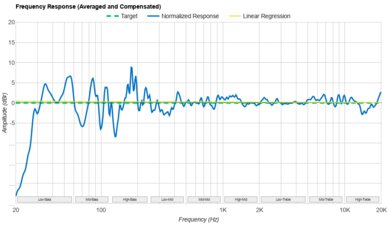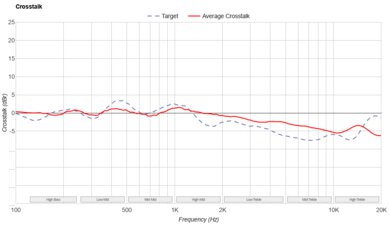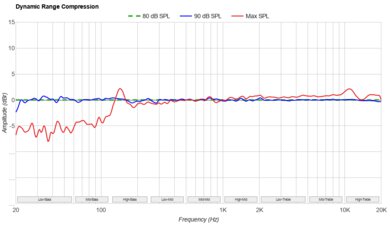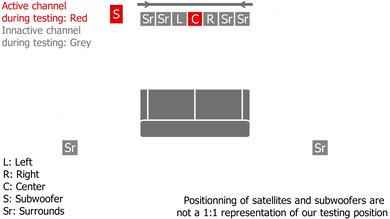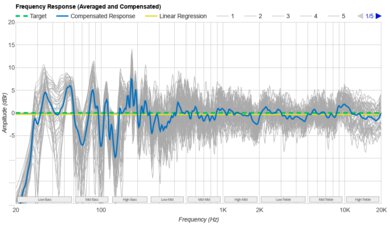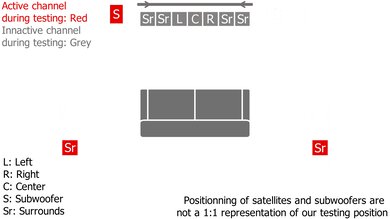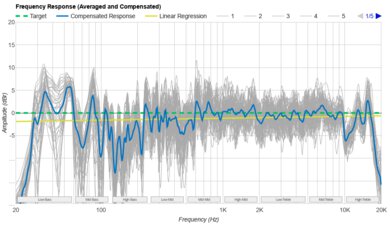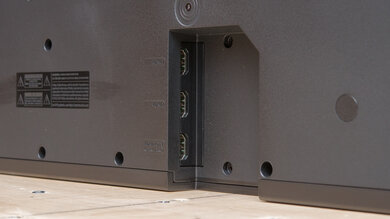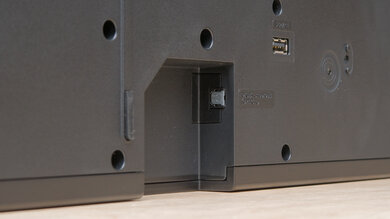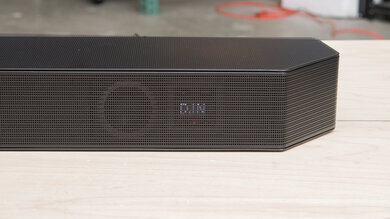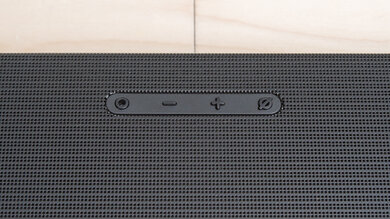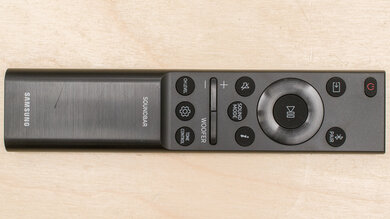The Samsung HW-B650 is a 3.1 soundbar released in 2022. It's the next generation of the Samsung HW-A650, and overall, its performance resembles its predecessor. It's a simple bar with a similar design to the Samsung HW-B550 and the Samsung HW-B450 but with an included center channel to improve vocal reproduction. It doesn't offer as many features as Samsung's more premium models, like room correction or Dolby Atmos support, but you still have a graphic EQ on hand to improve its sound.
Our Verdict
The Samsung HW-B650 is decent for mixed usage. It's a 3.1 bar suitable for many different types of audio content, with clear and accurate reproduction of sound right out of the box. It can also playback 5.1 surround sound formats like Dolby Digital, which you often find on streaming platforms, though its performance isn't the most immersive. Unfortunately, there's no Dolby Atmos support to help you take advantage of more immersive object-based audio formats.
- Graphic EQ.
- Gets loud.
- Lacks some low-bass.
- No Dolby Atmos support.
The Samsung HW-B650 is great for dialogue-heavy podcasts and TV shows. With its discrete center channel, it reproduces dialogue with more clarity than more budget-friendly 2.1 models. Its balanced mids ensure that voices are accurate and detailed in the mix, and there's even a dialogue enhancement mode to make voices more crisp if you want. You can stream podcasts to the bar over Bluetooth, but unfortunately, there's no support for other wireless playback options.
- Dialogue enhancement tool.
- Bluetooth compatible.
- No Wi-Fi, Apple AirPlay, or Chromecast support.
The Samsung HW-B650 is good for music. Out-of-the-box, its balanced mids ensure that voices and lead instruments reproduce with clarity and detail. As a result, it's suitable for listening to most music genres, and you have lots of customization tools on hand to get it to sound how you want. Its dedicated sub can't reproduce a very extended low-bass, so you notice a lack of rumble in bass-heavy genres like EDM and hip-hop.
- Graphic EQ.
- Gets loud.
- Lacks some low-bass.
The Samsung HW-B650 is fair for movies. Dialogue is clear and present in the mix thanks to its balanced mids, and there are many customization tools to help you get the most from its sound. It can playback 5.1 surround sound formats like Dolby Digital, which you often find on streaming platforms. However, since it's a 3.1 bar, it has to downmix surround sound into stereo. For a more clear and real sound, you can always add a separate rear speaker kit from the manufacturer.
- Graphic EQ.
- Dialogue enhancement tool.
- Lacks some low-bass.
- No Dolby Atmos support.
Changelog
-
Updated Aug 28, 2025:
The Stereo Soundstage section was updated to mention the Samsung HW-B750F.
-
Updated Jan 14, 2025:
The Compared To Other Soundbars and Surround 5.1 boxes have been updated to mention the Samsung HW-B750D.
- Updated Sep 24, 2024: We've added a comparison between this soundbar and the TCL S55H in Sound Enhancement Features.
- Updated May 28, 2024: Updated Stereo Dynamics results with new methodology from TBU 1.3. Added text to Audio Latency: ARC, Audio Latency: HDMI In, and Audio Latency: Optical boxes.
Check Price
Differences Between Sizes And Variants
The Samsung HW-B650/ZA is available in 'Black'. You can see the label for the model we tested here.
If you come across another version of this bar, let us know in the forums, and we'll update our review.
Popular Soundbar Comparisons
This 3.1 soundbar offers a similar performance to last year's Samsung HW-A650. It also sounds similar to the Samsung HW-B550, but its discrete center channel improves the quality of vocal reproduction. It's ideal for stereo content like music and TV shows, and you can always add rear speakers from the manufacturer to improve its surround sound. There's a step-up model, the Samsung HW-B750D, which adds two side-firing speakers for a 5.1 configuration instead to produce a wider soundstage, but these soundbars are otherwise rather similar.
See our recommendations for the best soundbars, the best soundbars under $300, and the best Samsung soundbars.
The Samsung HW-Q600B and the Samsung HW-B650 are both 2022 releases from the manufacturer. The main difference between these two bars comes in support for height content like Dolby Atmos, which is often found on different streaming platforms. The Q600B supports height content, while the B650 doesn't.
The Samsung HW-B750F is a better soundbar than the Samsung HW-B650. While these are similar soundbars in many respects, including their stereo tuning and design, the HW-B750F has the added benefit of a 5.1 configuration, so surround sound isn't converted to stereo. Because the HW-B750F also has side-firing drivers, it has a wider stereo soundstage, too. Still, the 3.1 HW-B650 has a higher max output volume and retains dynamics well. And, for TV and stereo music, these bars might be similar enough that you can comfortably make the compromise for the lower price. They otherwise share many of the same sound enhancements and limited audio format support.
The Samsung HW-B750D is slightly better for most people than the Samsung HW-B650, but they're very alike. The HW-750D is a 5.1 soundbar that houses two side-firing drivers at each end, which creates a bit bigger stereo soundstage. Both soundbars have low latency across HDMI and Optical connections, but the HW-750D is a little better in that regard, and its surrounds performance is more immersive. It otherwise shares most of the same features and limitations as the HW-B650, which can get a bit louder with a bit less compression. Still, at safe listening levels, you won't detect a difference. That said, the HW-B650 downmixes surround audio because it's a 3.1 bar. Still, you can use either bar's EQ to alter the sound to your tastes as well.
The Samsung HW-B650 is better than the Samsung HW-B550. They're both similar bars with similar sounds right out of the box and lots of customization tools on hand. However, the B650 adds a discrete center, which improves vocal clarity. The B550 remains a good option for those looking for a more budget-friendly choice.
Test Results




